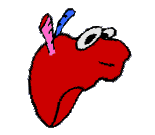 |
AISIM
Task Repartition
|
During our first meeting (12-13 December 1997), we decide the following task
repartition:
| IRCAD |
M3N/Mostra |
Description and geometrical model of the surgeon's tools
Surgery description(video and comments)
Role and behavior of organs in the vicinity of the liver
|
Biomechanical reference model of the liver
Biomechanical validation
Reference deformations
|
Medical glossary
Liver anatomy:
- structure
- position in the body
- anchor points
|
top
| Sinus/Epidaure |
iMAGIS
| Sharp
|
|
Geometrical models of liver's neighbors
Optimisation and parallel computation of deformable models
|
Physical models of liver's neighbors (behavior interactions with the
liver)
Realistic rendering (specularity to improve 3D perception)
Textures :
- organs surface (3D perception)
- inside the organ (bleeding)
- aspect modification due to tools' action
- aspect modification due to pathology
|
|
Real time deformable models
- cutting and suturing
- taking into account movments due to breathing
- heterogeneous model (vessels, pathology)
- contact with tool (force feedback, friction)
Vessels model
- hepathic pedicle
- cystic duc
contact between several tools (force feedback)
|
top
AISIM's members will start by focussing on minimal invasive techniques for
liver surgery. Then, the brain surgery case could be studied.
For the part common to Epidaure/Sinus, iMAGIS and Sharp, we plan to do as
follow :
Concurrently, the different teams will work on their own deformable model.
These models will be compared amongst themselves and to the biomechanic reference
model from M3N/MOSTRA.
This evaluation will focus on :
- deformation quality (as similar as possible to the reference model)
- computation time (real time)
- the ability to cut and suture the model in real time
We shall not forget the rendering aspect (texture mapping).
Different teams are also encouraged to develop bilateral relations among
themselves.
Each team is asked to provide as soon as possible a preliminary program and a
detailed presentation of their research.
Some questions remain opened, mainly about haptic simulation:
- Do we really need a very high frequency (>300Hz) update of exerted
forces?
Can we accept a low frequency update (with interpolation)?
- What is the infulence of the tools speed on this problem?
- Taking into account high friction due to the tools themselves, what are
negligible phenomena? What are unavoidable phenomena?
top /
AISIM
last update: 98/01/29 jcl


 (Bio)Medical teams
(Bio)Medical teams Computer Graphics teams
Computer Graphics teams Conclusions
Conclusions